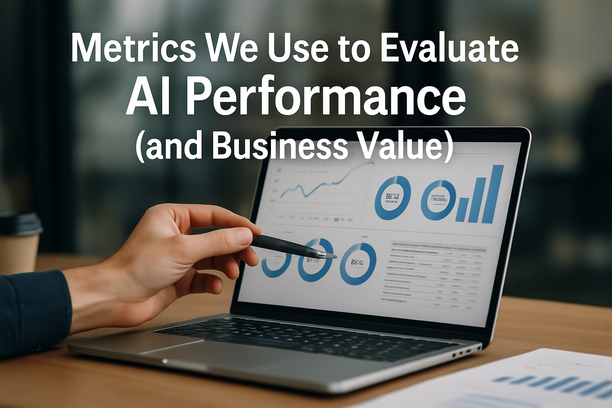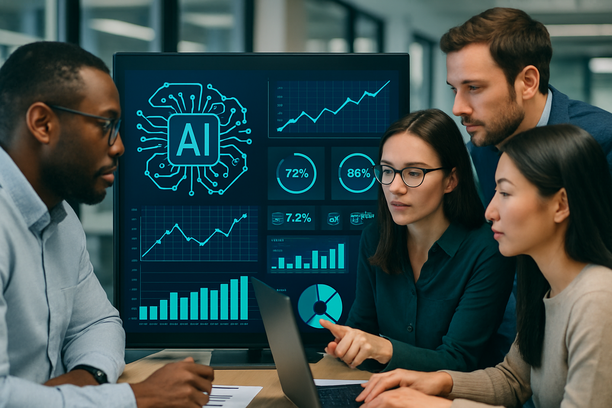Debunking Common Misconceptions About Artificial Intelligence
Artificial intelligence (AI) is often misunderstood as possessing human-like thinking or consciousness. Many assume AI has feelings, intuition, or self-awareness, but the reality is quite different. AI operates by following coded rules and processing inputs based on extensive training data, without true comprehension or experience. Unlike humans, AI does not “think” in the emotional or conscious sense but uses patterns and data to perform tasks. It identifies images or recognizes speech by matching patterns, yet it lacks understanding of meaning or context as humans do. Another myth is that AI independently learns like humans. In truth, AI’s “learning” involves adjusting system parameters under human supervision, based on predefined criteria. This distinction is crucial: AI can make errors or perpetuate biases if not carefully designed and monitored. Organizations implementing AI benefit from partnering with experts who appreciate these nuances to develop transparent, human-centered AI systems that augment rather than replace human decisions. Clearing these misconceptions sets realistic expectations and encourages responsible AI use aligned with human values. For deeper insights, see [FHTS – What is AI?](https://fht.services/what-is-ai-explaining-it-like-youre-talking-to-your-little-cousin/).
The Fundamental Differences Between Human Thinking and AI
Thinking in humans involves complex mental processes like memory, reasoning, planning, and imagining, all grounded in consciousness, emotions, and sensory experiences. This cognitive flexibility enables people to understand abstract concepts and make judgements in ever-changing contexts. AI, conversely, functions through clearly defined algorithms and data analysis to complete specific tasks. While it can imitate aspects of human thought such as language recognition, AI lacks true awareness or feelings. Its operations are task-specific and strictly computational, depending entirely on the data and logic programmed by humans. The key distinction is that human cognition is creative and context-sensitive, influenced by emotions and knowledge, whereas AI processes are purely mechanical and lack judgment or intuition. Recognizing this difference guides safe AI application that supports human intelligence without overstepping boundaries. Companies like FHTS emphasize designing AI tools to augment human decision-making, fostering transparency and adherence to human-centered values. Related resources include [what AI can and cannot do](https://fht.services/what-ai-cant-do-and-shouldnt-try-to/) and the [Safe and Smart framework](https://fht.services/what-is-the-safe-and-smart-framework/).
How AI Works: Algorithms, Data, and Pattern Recognition
At its core, AI functions through three main components: algorithms, data handling, and pattern recognition. An algorithm acts as a precise instruction set that guides AI in processing information. Unlike humans who rely on intuition and emotions, AI strictly follows programmed rules. Data handling involves collecting and organizing vast amounts of information, which AI uses to learn by analyzing examples but without understanding the underlying meanings. Pattern recognition enables AI to identify consistent features within data, such as spotting cats in photos by detecting shapes or colors. Despite this capability, AI does not “see” or understand in the human sense; it simply matches patterns it was trained on. Because AI’s operation is mechanic and devoid of creativity or consciousness, it must be carefully designed and supervised to avoid errors or unintended consequences. Experts at organizations like FHTS focus on safe AI design, ensuring algorithms are fair, transparent, and responsible. This approach allows AI systems to support human tasks effectively without misrepresenting their abilities. For further reading, see: [what-data-means-to-ai-and-why-it-needs-so-much](https://fht.services/what-data-means-to-ai-and-why-it-needs-so-much).
Recognizing AI’s Capabilities and Limitations for Responsible Use
Understanding what AI can and cannot do is essential for leveraging its power responsibly. AI excels at processing large volumes of data rapidly, identifying patterns, and aiding in decision-making, especially in sectors like healthcare and public safety. However, AI lacks human judgment, empathy, and ethical reasoning, making human oversight indispensable. Overestimating AI’s abilities risks poor outcomes and ethical challenges, as AI systems may embed biases from training data or make mistakes. Ethical AI use requires fairness, transparency, and respect for privacy, demanding clear guidelines and active monitoring. A successful human-AI relationship is collaborative, with AI handling repetitive, data-intense work, freeing humans to focus on complex reasoning, creativity, and empathy. Leading companies experienced in safe AI frameworks such as FHTS help organizations navigate these complexities, ensuring AI complements human values and societal norms. Their frameworks support ethical innovation and trustworthy AI integration. To learn more, visit [Safe and Smart AI Development Principles](https://fht.services/what-is-the-safe-and-smart-framework/).
The Future of Human-AI Collaboration
AI is not meant to replace human intelligence but to augment and enhance it. By taking over repetitive tasks and processing massive datasets quickly, AI enables humans to engage in more meaningful work requiring intuition, emotion, and critical thinking. The synergy between humans and AI holds the promise of transformative innovations in fields like healthcare, safety, and customer experience. AI provides data-driven insights that complement human judgement without diminishing the essential human touch. Successful collaboration hinges on responsible AI design transparent, fair, and reliable systems that foster trust among users and organizations. Companies like FHTS advocate human-centric AI implementation, ensuring technology supports human goals ethically and safely. This partnership unlocks smarter decision-making and new opportunities, blending human creativity with intelligent systems. For more on building this collaborative future, see [FHTS – Why humans and AI should collaborate for a better future](https://fht.services/why-humans-and-ai-should-collaborate-for-a-better-future/).


